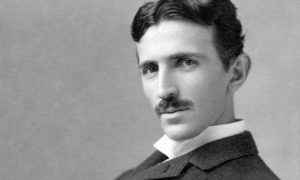Inventions
Lightning Rod

Lightning Rod History
There are many authors who refer to the lightning rod as “the son of the kite” when they talk about its history. This son-of-the-kite concept was due to a particularly rainy day, in which the American Wiseman Benjamin Franklin was flying his kite, a rage hit it and immediately destroyed it. This experience aroused in Franklin a great interest around how to protect houses and people from electric discharges from the sky, until finally, he would invent the lightning rod.
As evident, the principle of the invention requires a study of electrical phenomena, a passion that Benjamin Franklin had at a young age. Franklin, considered as one of the fathers of the American homeland, first formulated the principle of conservation of electricity, and then, in 1752 formulated some principles of the electric nature of lightning; knowledge that undoubtedly, together with the verification of the power of metal tips, would serve him to finish the design of his preventive device.
The lightning rod invented by Benjamin Franklin consisted of a device for the protection of buildings against atmospheric electrical discharges, and contrary to what its name indicates, it is designed to attract the discharge and carry it to the ground. Franklin’s lightning rod consisted of three fundamental parts:
- An iron rod 5 to 10 m long, whose upper end had a copper or platinum tip, which is mounted on the highest part of the building.
- An electrically conductive system, which is constituted essentially by iron bars or copper cables.
- An electric dissipater, this can be the extension of the conductive element and that, anchored to the ground, has the purpose of dissipating the electric discharge in the ground, protecting its environment.
It can be concluded that Franklin’s invention was a consequence of his studies about static electricity, whose nature encouraged the scientific community to look for methods of producing it.
In 1919, there was an important event in the history of the modern lightning rod. Nikola Tesla redefined the operating principles of Franklin’s invention, refuting the theories expressed by Benjamin and patenting a new design. Since then, the production of lightning rods has become widespread, thanks to the important contribution of Tesla, and yet, using the same physical operating principles studied by Franklin.

Inventions
Emil Berliner
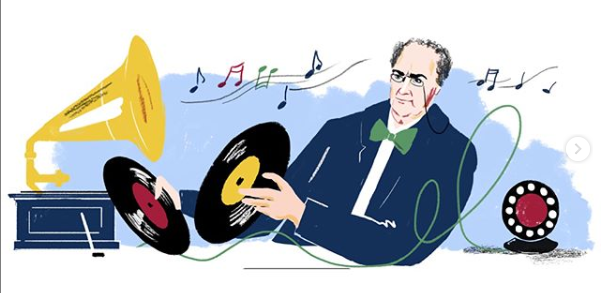
Emil Berliner Biography
Emil Berliner (May 20, 1851 – August 3, 1929) inventor. He was born in Hannover, Germany. He grew up in a Jewish environment. Due to a complex economic situation, he had to work to help his parents from a young age, so he did not attend school regularly. His first paid job was as a painter, for later, at age 16, to enter as a clerk in a food store.
According to his experience, he began to be interested in the production methods of the factory where he worked. He was a very versatile man since he built a weaving machine that improved existing ones; It was one of the many inventions of German. In 1869, when a system of repression against Jewish families was installed, Berliner obtained a position in a company located in Washington, United States. The family raised the money needed to support his trip and, especially, to prevent his son from being sent to the army ranks. Then, Emil settled in New York with the idea of finding a job. He returned to Washington. Despite the economic difficulties, he studied at the Cooper Institute electricity and physics.
Motivated by scientists who were researching about the conversion of sound into electrical impulses that could be transmitted on wires; Berliner experimented with the electrical transmission of sound. Thanks to his research he was granted an assistant position of Dr. Constantine Fahlberg in his prestigious chemical laboratory. Soon he invented two electrical mechanisms that reproduced the sound more authentically and made it transmissible in the distance.
The responsibility for creating the prototypes of the microphone and the transformer was Berliner, the two basic mechanisms for electronic communication, in addition to building a carbon transmitter microphone and an iron diagram transmitter. It is clear that sometimes his inventions were inconvenient, but Berliner managed to solve these problems. Occasionally, he used objects that had not previously been used or integrated into an invention.
It was based on the telephone number of Reiss and Antonio Meucci and from there make some progress. Besides, he powered the device invented by Alexander Graham Bell. In this way, Berliner is identified as the inventor of the modern telephone. Berliner offered his invention to the subsidiary of the Bell Company in New York, the offer was finalized in the year of 1878 for $ 50,000. It was not long before the conflict with the Western Union arrived over the patent of the invention, the American courts appealed in favor of Berliner.
In 1881, together with his brother Joseph, he founded the Telephone-Fabrik Berliner, with branches in Vienna, Berlin, Budapest, London, and Paris. Later, he returned to Washington in 1883, where he advanced his independent research on the mechanical reproduction of sound. Berliner created new reproduction materials to improve his invention. One of his most significant contributions was the improvement of the phonograph, the first was patented in 1877.
I create a record player baptized gramophone, with a needle system that would be hegemonic until the end of the 20th century. In 1887 he patented his invention. A year later, the Franklin Institute in Philadelphia awarded him the Scott Medal for his contribution to the development of acoustics and sound reproduction. With collaboration, he founded the United States Gramophone Company in 1893; In 1897 he created the Berliner Gramophone Company in Montreal. He quickly arrived in Europe: he opened the Deutsche Gramaphon Gesellschaft and Britain’s Gramophone Co.
We must indicate that Berliner worked in other areas such as aeronautics. Then, he was the first to use a light internal combustion engine. His work was very important because years later he joined the airplanes. His son, Henry Berliner, designed a helicopter that flew successfully in early 1919. His interest in the problems of sound reproduction was greater, which is why he strove to create acoustic tiles for use in auditoriums and concert halls. His contribution was recognized in 1913 and he was awarded the Elliot Cresson Medal in recognition of his scientific contribution to telephony and acoustics. He died on August 3, 1929, as a result of a heart attack.
WORKS
- Conclusions
- The Milk Question and Mortality Among Children Here and in Germany: An Observation
- Some Neglected Essentials in the Fight against Consumption
- A Study Towards the Solution of Industrial Problems in the New Zionist Commonwealth
- Muddy Jim and other rhymes: 12 illustrated health jingles for children
Inventions
James Watt
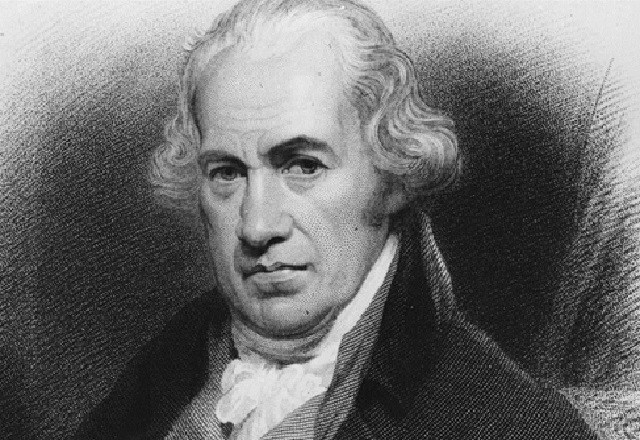
James Watt Biography
The engineer and inventor James Watt was born on January 19, 1736, in the town of Greenock, belonging to the nation of Scotland, United Kingdom, and died on August 25, 1819, in the city of Birmingham, the nation of England, United Kingdom. His research inspired the creation of the first steam engines, which served to lay the foundations for the advent of the Industrial Revolution in the second half of the eighteenth century. Due to the contributions, he made in life, as an honor, the decision was made to give Watts (W) the power unit of measure.
He was born in a comfortable home as the son of the treasurer, naval engineer and carpenter, James Watt, and the high-born lady Agnes Muirhead. Because he was constantly affected by his weak state of health, his parents made the decision to educate him at home, being taught most of the time by his mother. When he was 14 years old, he was allowed to attend the Greenock grammar school, demonstrating at that time good skills for mathematics and crafts; possibly this was due to the influence of his grandfather who was a professor of mathematics and the work he saw and even carried out together with his father in the carpentry workshop, but evidenced at the same time little interest in learning Latin and Greek.
When he was 17 years old he became interested in the construction of complex machines that had the potential to be used in the field of mathematics, so he decided to enter the University of Glasgow, where in addition to study aspects of this field he would work as a specialist of the same. For the year of 1755 he moved to the University of London to continue with his research interests, but because the place drastically affected his health his stay lasted just over a year, returning to his previous university; Glasgow. Within the campus of the university began a modest business in which built, repaired and offered for sale mathematical measurement tools, while using these resources for the study on the practical uses of steam, without reaching a satisfactory result.
Approximately in 1764, he was commissioned to repair an atmospheric Newcomen steam engine, which after finishing his work with it, Watt began to think in different ways to improve its design, because he realized that the machine was wasting a lot of energy heating and cooling its pistons, performance being affected.
That same year he married one of his cousins: Margaret Miller, with whom he would have a total of six children. After several attempts, finally, Watt presented a new model of atmospheric steam machine, in which was added a condenser that made it consume less carbon and wasted less energy.
For the year of 1773 his wife died, and after spending three years overcoming his loss, he married Ann McGregor, with whom he would once again have six children. In the year of 1769, he managed to patent the first design of what would be a steam engine, but he would not succeed with it in the market until his association with Matthew Boulton, founding the Soho Foundry company in the year 1774, which would be dedicated completely to manufacture steam engines. Thanks to this he could have at hand better elements to improve his designs and investigate other steam applications, developing a steam pressure gauge in the machines, a rotary engine that improved the simple movement of pumping by a rotating one; serving to feed more than one machine with the energy that was produced, a double action motor that distributed the steam stored on both sides of the piston, and even made a theory to measure the capacity of a steam engine in a unit that he named horse steam.
Some of his lesser-known inventions were a device that could be added to telescopes to calculate distances and a photocopier that moistened texts to transfer his ink to a blank page, making a significant number of copies of the original document. In the year of 1875, he became part of the Royal Society of London for the advancement of natural science, in addition, he became a valuable member for the Lunar Society of Birmingham.
For the year 1800 Watt decided to retire, transferring his responsibilities with the Soho Foundry to his son James Watt Jr. What Matthew Boulton also did. He retired to his house “Heathfield Hall” from where he continued with his inventive interests until he died at the age of 83 years, on August 25 of the year 1819.
Inventions
Evangelista Torricelli
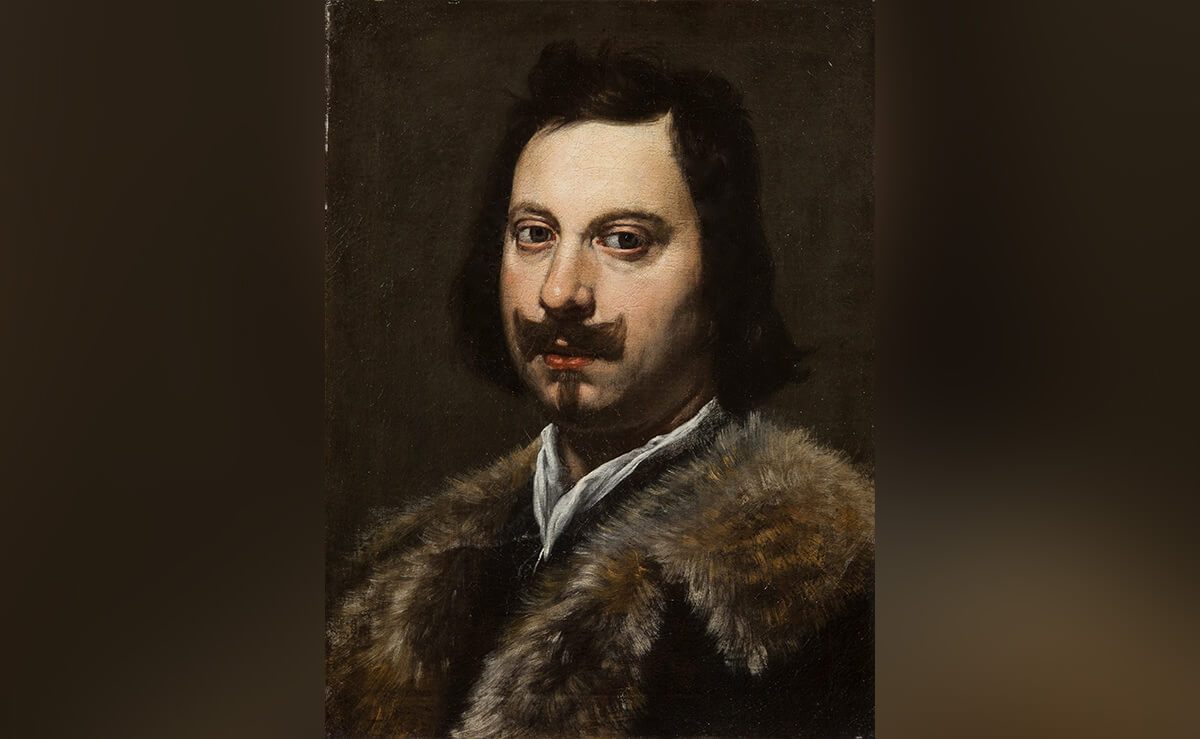
Evangelista Torricelli Biography
Evangelista Torricelli (1608-1647) was an Italian physicist and mathematician who made great contributions in the fields of pure mathematics, integral calculus and the movement of projectiles and fluids. Evangelista Torricelli thought that mathematics was the language that allowed humans to understand nature.
Torricelli was the first man to recognize that air has weight and that atmospheric pressure is variable. From this idea, he created an artifact that was known as Torricelli’s tube and that gave rise to the invention of the barometer. On the other hand, in the field of mathematics, Evangelista developed hat is called Torricelli’s theorem which helps to calculate the flow of a liquid through an open hole at a certain depth.
Evangelista Torricelli was born on October 15, 1608, in Faenza, province of Ravenna, Italy, and grew up in a humble family. His parents were Gaspare Torricelli, a textile worker, and Caterina Angetti. When their parents realized his potential, they decided to send him to study humanities with his father’s brother, Jacobo, who was a Camaldulense friar.
In 1624, he entered a Jesuit college where he was taught in mathematics and philosophy for two years. After his father died, between 1626 and 1627 he traveled to Rome with his whole family (his mother and two brothers) to study with the Benedictine friar, Benedetto Castelli.
Torricelli would be assigned the position of private secretary of Castelli. He used the money obtained with work to pay for his studies so he could stay in the position and studying at the University College of Sapienza until 1632. Later, Castelli appointed Torricelli to replace him as the teacher in mathematics, mechanics, hydraulics, and astronomy in the University College of Sapienza.
On September 11, 1632, Torricelli received a letter from Galileo addressed to Castelli. In his response, Torricelli besides explaining the reason for the absence of his teacher, he took the opportunity to express his admiration for the text Dialogue Concerning the Two Chief World Systems, Ptolemaic and Copernican that was written by Galileo six months earlier, and presented his support for the Copernicus theory that the earth revolves around the sun.
After Galileo was ordered to appear in Rome for his astronomy approaches, Torricelli decided to move his attention to less dangerous terrain, so he concentrated on mathematics.
In De Motu Gravium et Levium, Torricelli consigned some developments to the mechanical principles set forth by Galileo in his book Two New Sciences (1638). Shortly afterward, on April 10th, 1641, Castelli handed Galileo a copy of this work, and later, Torricelli became Secretary of Galileo. Unfortunately, after three months of coexistence with Galileo in Florence, Galileo passed away.
In spite of the death of Galileo, he remained in Florence as a philosopher and mathematician of the Grand Duke Ferdinand II and professor of mathematics at the Academy. Shortly after, he managed to answer the question that had haunted Galileo: the question of the veracity of Aristotle’s theory, which said that Nature abhors a vacuum.
Torricelli achieved the answer by means of an experiment that consisted of filling a tube with mercury (liquid that is 13.5 times denser than water) covering one end of the container and inserting it into another container with more mercury. In this way, it was observed that a part of the mercury that filled the tube is transferred to the second container creating a space for the vacuum. In addition, his demonstration of the existence of emptiness included the clarity that it is not possible to find it in nature but it is necessary to generate it artificially.
In 1643, he demonstrated the existence of atmospheric pressure and developed the basis for the barometer.
The barometer was not Torricelli’s only important discovery. For example, thanks to him we know that geometric curves are not limited to their theoretical form but are representations of real physical movements. From this idea, it was proposed to study the parabolic trajectories followed by the projectiles when being fired and reached two conclusions: the first was that “the envelope of all these parables is another parable” and the second was that “the locus of the vertices of all the parabolas is also another parabola.” Apart from this, he showed that “the rotation of curves of infinite length can produce solids of finite volume.” (Suma, 2009).
Undoubtedly Torricelli was one of the most productive and promising mathematicians of the seventeenth century. It is believed that if he had not died so young (he was only 39 years old at the time of his death) he would have formulated his methods mathematically and would have approached the concept of the limit. It is even believed that he could have invented the infinitesimal calculus. Unfortunately, he lost the battle against pleurisy in 1647, and died in Florence, Italy.
Inventions
Nikola Tesla
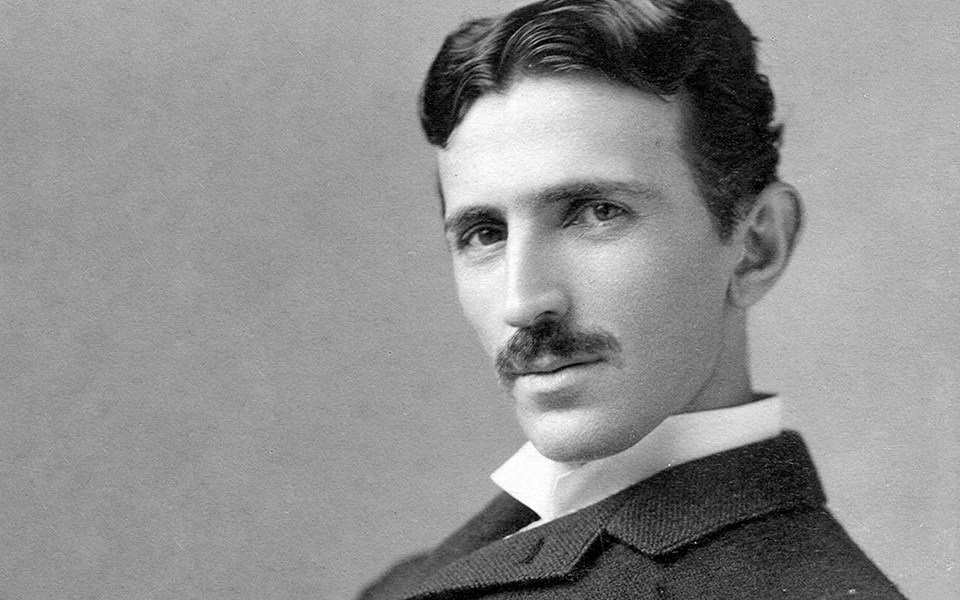
Nikola Tesla Biography
Nikola Tesla was born on July 10, 1856, in Smiljan, the Serbian province of Lika, which at that time was called Croatia (Yugoslavia) and died of cardiac arrest at age 87 in New York on January 7, 1943.
Nikola was part of 5 brothers who were underestimated by their father, a Serbian Orthodox priest that decided to invent something that would astonish the world, begin with experiments to take advantage of the strength of the water and the force of the wind. He liked mathematics and had a great aptitude to handle formulas to solve equations. He enrolled at the Polytechnic Institute of Graz, where he specialized in Physics and Mathematics.
“Our virtues and our defects are inseparable, like force and matter, and when they separate, man does not exist” Nicholas Tesla
In the 1870s, Nikola Tesla moved to Budapest, where he worked at the telephone building. He finished his studies at the University of Prague in 1880 and in 1881 he invented a telephone amplifier that reduced static. Besides in that city, he developed the idea of the induction motor, but after several years trying to get interested in his invention, he decided in 1884 to leave Europe and travel to the United States where Thomas Edison hired him to work together making improvements to Edison’s inventions, but then they separate due to personality attitudes of both, scientific and commercial issues that Tesla did not handle
In 1885, Tesla received funds for the Tesla Electric Light Company to take charge of developing the improved arc lighting, after doing it so successfully. It was not until 1887 when Tesla found interest in his Alternating Current electrical system and in the financing of his company Tesla Electric Company, that Tesla had already filed several patents for inventions based on alternating current. This system of alternating current attracted the attention of engineer George Westinghouse, who at that time needed to supply the country with long-distance energy. Believing in the genius of Tesla in 1888, Westinghouse acquired his patents and made him a member of Westinghouse. He works tirelessly and it is at this time that Tesla patents several inventions such as Tesla Coil, until in 1893, the Westinghouse Corporation was chosen to provide lighting at the 1893 World Exposition in Chicago and Tesla made several demonstrations of his AC system.
As early as 1895, Nikola Tesla had designed what would be one of the first AC hydropower plants in the United States, at Niagara Falls fed later with the city of Buffalo and New York; This feat full of success definitely became the most important energy system of the twentieth century, remaining the standard since then.
Throughout his career, Tesla discovered, designed and developed ideas that motivated important inventions such as dynamos, radar technology, X-rays, electromagnetic rotating field, remote control, among others.
Based on the wireless transmission of power, in 1900 Nikola Tesla works on his great project, the construction of a global wireless communication system that consisted of transmitting through an electric tower to share information and provide free electricity throughout the world.
Financed by the financial giant JP Morgan, in 1901 Tesla began working on the design and construction of a laboratory with a power station and a massive transmission tower on Long Island, New York, which was called Wardenclyffe. However, the investors had doubts about the viability of the Tesla system and its rival, Guglielmo Marconi, who came with the support of Andrew Carnegie and Thomas Edison. Tesla had no choice but to abandon the project. The staff of Wardenclyffe was dismissed in 1906 and in 1915 the site of the mortgage was executed to the point that in 1917 Tesla went bankrupt and the tower was dismantled and sold to pay the debts that Tesla had.
“Science is nothing more than a perversion of itself unless it has as a final goal the improvement of humanity” Nicholas Tesla
After this, Tesla had the need to return to work as a consultant. However, as time passed, his ideas became extravagant and impractical, to the point that he spent a lot of time in New York caring for wild pigeons. He even caught the attention of the authorities because his idea of building a powerful “death ray” (weapon of ultimate mass destruction), he had generated some interest from the Soviet Union during World War II.
Finally, on January 7, 1943, Nikola Tesla dies poor and lonely in New York. Nevertheless, his great legacy still lives to the present.
FUN FACTS
- There are many Nikola Tesla books, movies of his life and famous works, and the Nikola Tesla Museum in Belgrade, Serbia.
- In 1994, A street sign identifying “Nikola Tesla Corner” was installed at 40th Street and 6th Avenue near the lab site.
- Since 2013, the Wardenclyffe website has been invested in restoration work by Matthew Inman of The Oatmeal.com.
History
Johannes Gutenberg
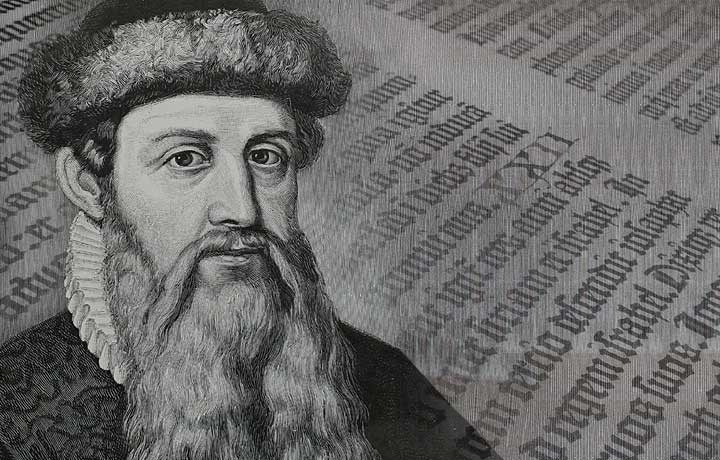
Johannes Gutenberg Biography
Johannes Gutenberg was an inventor, engraver and printer, creator of one of the inventions that changed the future of humanity: the printing press. Gutenberg was born in Mainz, Germany, in 1397.
His real last name was Gensfleisch. Else, Friele (mother and father) and their brothers, lived in a house called Zum Gutenberg. His family moved to Eltville am Rhein, where his mother had inherited a farm. In the year of 1431 his father died, and two years later his mother also died.
About Gutenberg is not known much until in 1434 when he began to work the silversmith in Strasbourg, where two years later he is interested in perfecting the stature of precious stones. In 1437, inclines his efforts in the elaboration of mirrors. In Strasbourg, Gutenberg founded a goldsmith’s workshop with other partners. In addition to his own techniques in the manufacture of mirrors and lenses, and carving of gems, Gutenberg devoted a large part of his time to researching printing techniques, which he already called “New Art.”
Between 1438 and 1448, Gutenberg, driven by his interest, took money from the workshop’s capital box to continue with the greatest of secrets, his typographical experiments. His partners in the goldsmith business realized the fraud and sued him. It is said that his partners took some printed materials in his time off work by Gutenberg as evidence. The judge noted in his documents that Gutenberg “had bought lead to manufacture pieces that separated and melted.” It was also mentioned that there was an object to press the material.
In 1449, Gutenberg lost his trial and was almost forced to leave Strasbourg and return to Mainz, and in that same year, he was associated with a very wealthy lawyer, Johann Fust, who was interested in Gutenberg’s typographical advances and start working in his workshop. Fust lent Gutenberg some money to finish a printing press. With the financial support of his partner, Gutenberg worked hard on his project, until around 1450 that he completed his invention, the printing of mobile types. Thanks to Gutenberg’s knowledge as a metalworker, they were key to his idea of using steel molds that represented the letters of the alphabet, since these would no longer be broken when the press came on the molds to be printed on the paper. In this way, the problem of the fragility of the old wooden molds was solved.
Gutenberg initiated the edition of the Bible of 42 lines in 1455. The 42-line Bible, or also known as the Gutenberg Bible, had more than 1,200 pages, divided into two columns of 42 lines each. It is a marvel of typographical beauty: the letters were of a Gothic style, very similar to that of the medieval manuscripts. Currently, in the world, 46 copies of the work are conserved.
In 1455, Gutenberg did not have much money to return the money that Fust had lent him, so the union was over, and Gutenberg saw himself in misery; Even Gutenberg had to reveal the secret of setting up printing presses in order to survive. Fust sued Gutenberg for breaking the clauses of the contract and not having returned the money left over from his project. Fust and his son-in-law Schöffer partnered and published The Gutenberg Bible. The following year they released El Psalterio or Psalmorum Codex.
In 1464, Gutenberg was partially blind, and the powerful elector Adolfo de Nassau, who valued the famous invention, welcomed him into his court and gave him the necessary means so that he could survive worthily until the end of his days.
On February 3, 1468, Johannes Gutenberg died in his hometown, Mainz.
“The printing press is an army of twenty-six lead soldiers with whom you can conquer the world.”




